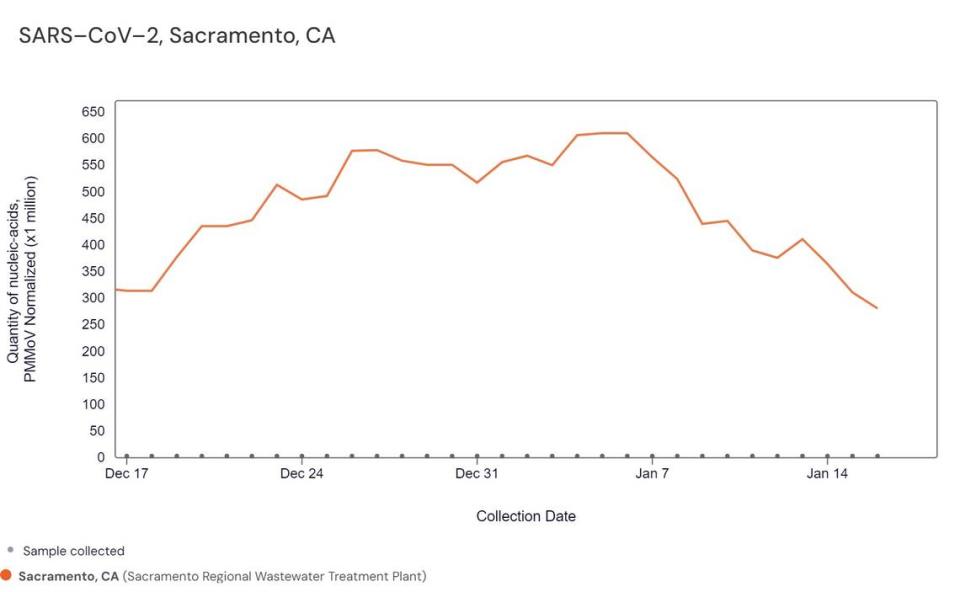Medium levels of COVID-19 found in Sacramento County wastewater during statewide surge
To understand the effect California’s latest COVID-19 surge has had on Sacramento, look at its water.
Data collected by WastewaterSCAN, a Standford University-based research team that analyzes infectious diseases from wastewater treatment plants across the U.S., revealed medium levels of SARS-CoV-2 (or COVID-19) in Sacramento County’s sewage.
According to recent samples collected from the Sacramento Regional Wastewater Treatment Plant in Elk Grove, which serves a population of nearly 1.5 million residents, there’s a medium concentration of COVID-19 in the area. But data suggests there’s been a downward trend in the past 21 days.
You create wastewater every day, according to the Institute of Agriculture and Natural Resources, whether it’s by bathing, flushing the toilet, washing your clothes or scrubbing your dishes clean.
The wastewater analysis uses U.S. municipal treatment plants that serve around 4 million people, compared to the common metric of a case rate per 100,000 residents.
“Sampling at this scale covers a population large enough that positive results for a disease won’t be associated with individuals,” WastewaterSCAN wrote on its website, adding its data instead gives a snapshot of infectious diseases at a community level.
Wastewater samples are collected by treatment plant staff and shipped overnight on ice to a partner lab, WastewaterSCAN stated. Experts then use consistent methods to “process genomic targets” for pathogens like COVID-19, respiratory syncytial virus (RSV) and influenza.
A line chart of COVID-19 detection in Sacramento’s sewage shows a clear upward trend between Dec. 19 and Dec. 20. There were moments of random fluctuations before a peak on Jan. 5.
The presence of the virus plummeted soon after.

Concentration levels for respiratory syncytial virus, also known as RSV, are high, according to recent data from WasteWaterSCAN. Norovirus or the “winter vomiting disease” levels are medium. Both are also in a downward trend the last three weeks.
How does COVID-19 fare in California?
Across California, COVID-19 cases spiked in the weeks following Christmas, with several counties in the northern portion of the state bearing the worst of the virus.
JN. 1, the latest COVID-19 variant being tracked by health experts, has been rapidly circulating. COVID-19 test positivity was at 11.8% as of Jan. 12, according to the state health department, compared to 9.6% on Dec. 22.
In the past week, 3,611 patients were admitted to the hospital due to the coronavirus, and about 3.7% of deaths were COVID-19-related, the state health department wrote in its weekly report.
Nearly 1,540 COVID-19-related deaths have been recorded across California, between Oct. 1, 2023, and Jan. 6, 2024.
New data from the U.S. Centers for Disease Control and Prevention revealed that 17 out of California’s 58 counties — including Sacramento, Yolo, Placer and El Dorado counties — have reached medium levels for COVID-19-related hospitalizations.
People who test positive for COVID-19 no longer need to isolate for five days.
In an updated coronavirus isolation guidance from the California Department of Public Health, the length of someone’s isolation period should be determined based on the severity of their symptoms.
The newest recommendation was made to focus on high-risk individuals and reduce social disruptions, the state health department stated.
What do you want to know about life in Sacramento? Ask our service journalism team your top-of-mind questions in the module below or email servicejournalists@sacbee.com.

